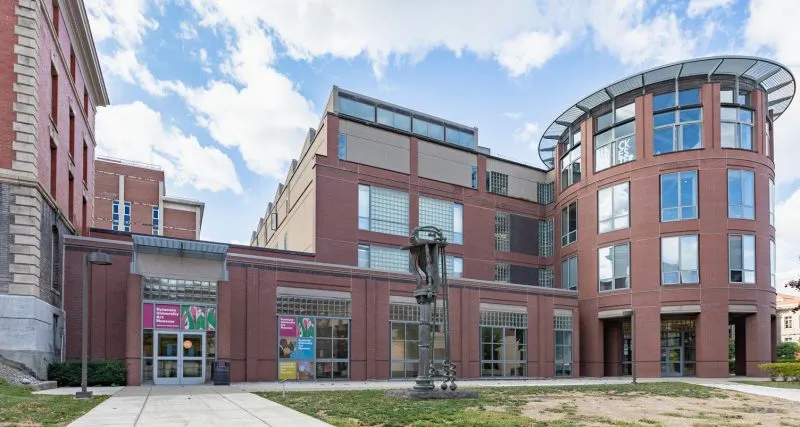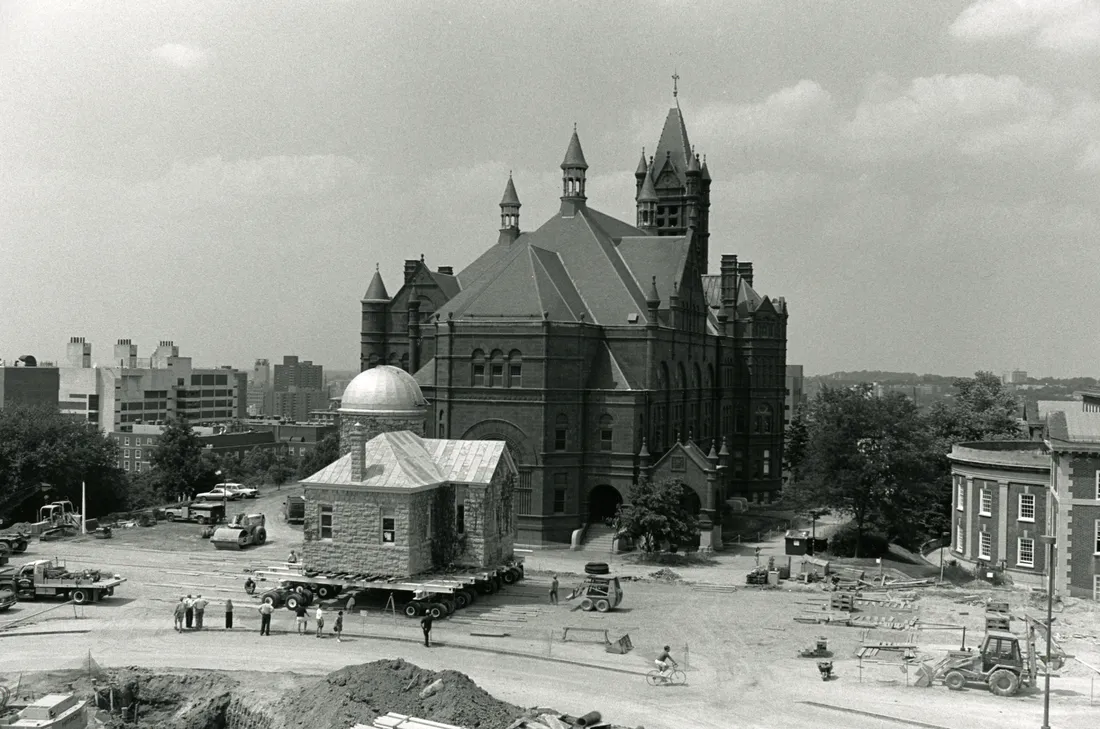When Terry Widrick G’00 hosts spring and summer visitors at his home in Syracuse, the Tree of 40 Fruit is always among the local sights he takes them to see. This year, guests from the Midwest arrived just in time to catch Syracuse University’s living sculpture in full bloom. “It’s one of my favorite things on campus,” Widrick says. “I’m proud to show it to friends, along with the rest of the University.”
Sam Van Aken created his Tree of 40 Fruit in 2008 by grafting together hundreds of varieties of stone fruit trees from an heirloom orchard. Located on the Quad between H.B. Crouse Hall and Hinds Hall, it’s one of numerous sculptures and other public artworks that have become integral to the campus landscape, inspiring reflection and appreciation in all who pass through.
The works located outdoors on campus represent a fraction of the nearly 45,000 works of art and objects of cultural heritage that comprise the permanent collection of the Syracuse University Art Museum. One of the 10 largest academic museum collections in the United States, it spans 5,000 years of aesthetic development and boasts a nationally renowned selection of prints. In addition, diverse cultural objects, especially from the Indian subcontinent, and works by global artists provide insight into and appreciation of international voices and traditions.
In keeping with its mission and that of its founders, the Syracuse University Art Museum promotes an awareness of art in daily life, regardless of season or setting. In addition to exhibitions and installations on main campus and satellite locations in New York City—the Louise and Bernard Palitz Gallery at Syracuse University’s Lubin House—the museum runs a traveling exhibition program that extends the reach of the collection and its educational mission.
The Syracuse community is welcome to walk around campus and enjoy the outdoor art installations. Here are just a few of the works visitors will see:
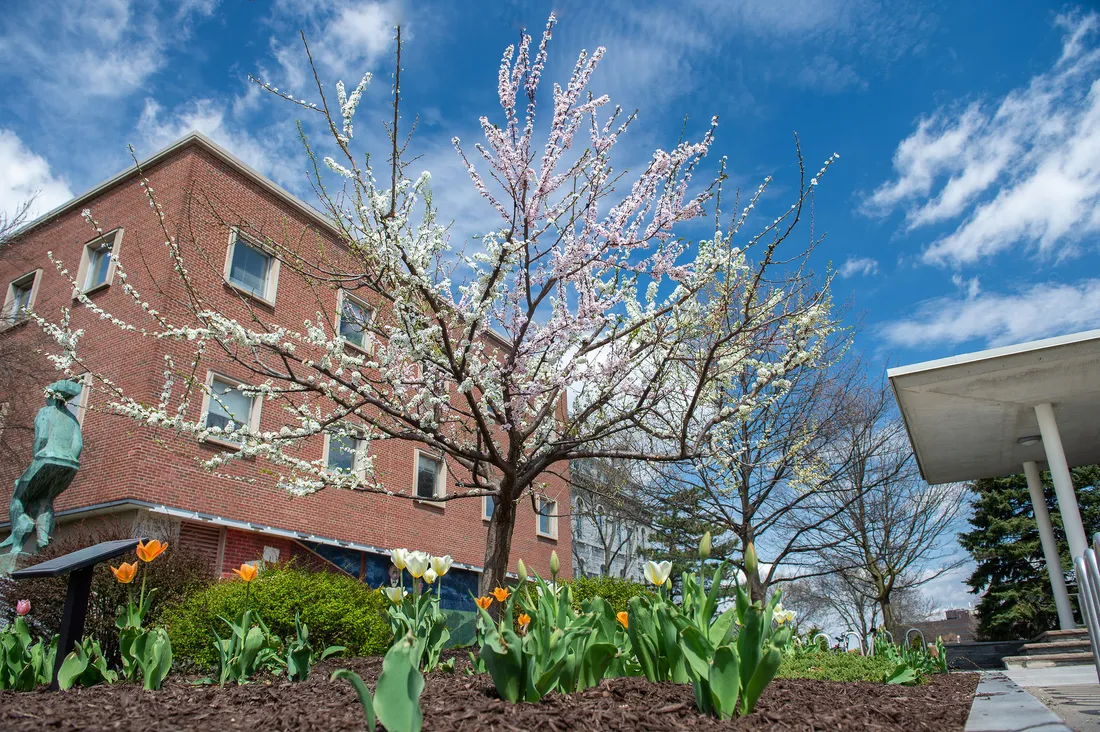
Tree of 40 Fruit
Sam Van Aken, 2008
Located on the Quad between H.B. Crouse Hall and Hinds Hall
The first of its kind by Sam Van Aken, a studio arts professor at Syracuse University, this living sculpture was dedicated in 2011 during a 9/11 remembrance event as a symbol of acceptance and dialogue across differences.
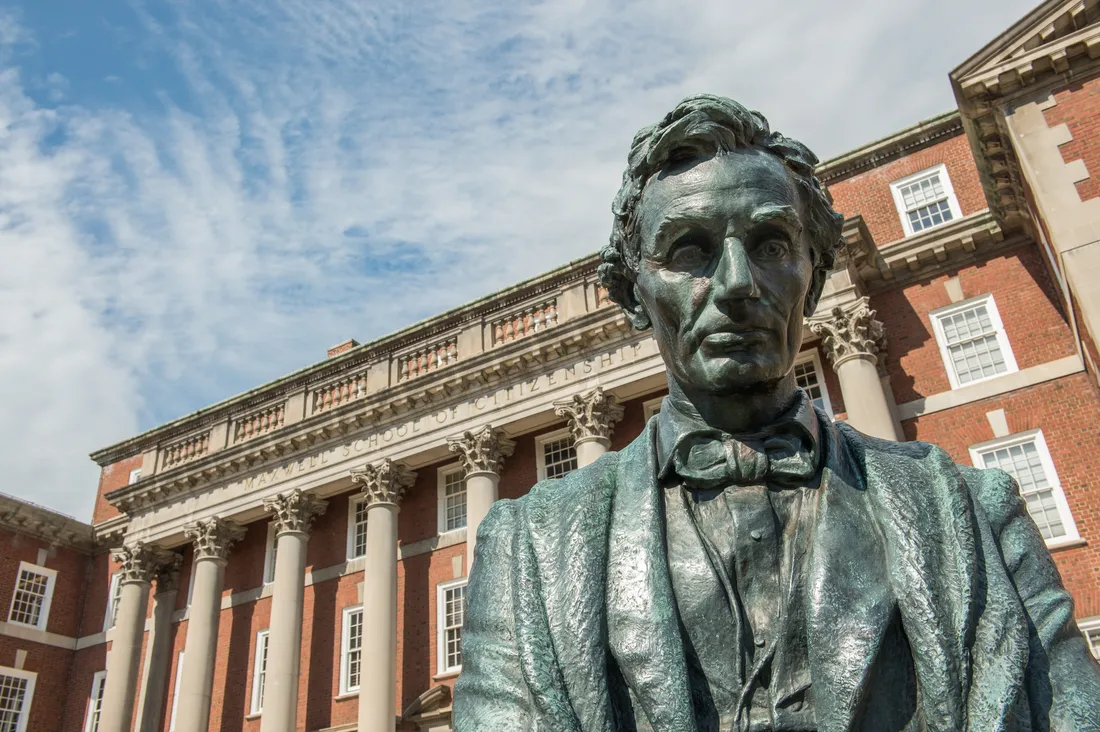
Abraham Lincoln, Seated
James Earle Fraser, 1930; cast 1968
Located in the Maxwell School Courtyard
The only recast of the original bronze, this statue was placed in 1968. Here the artist portrays a young, beardless Lincoln seated in a pensive pose, perhaps contemplating the high calling of public service.
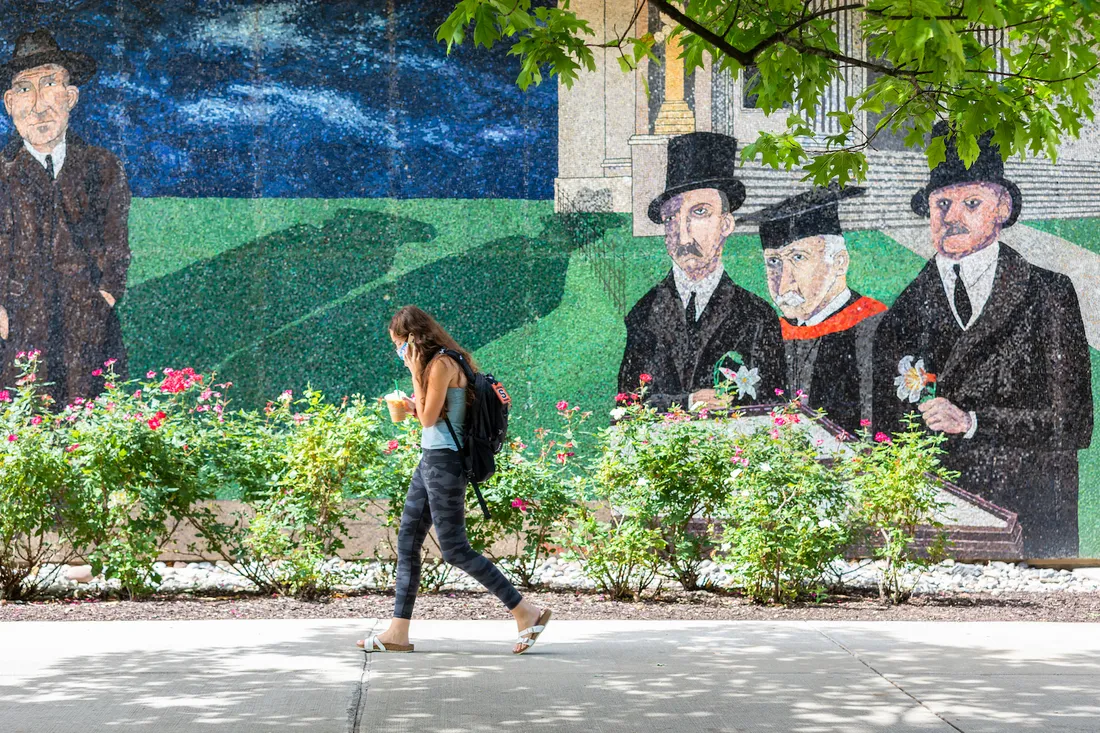
Passion of Sacco and Vanzetti
Ben Shahn, 1967
Located on the east wall of H.B. Crouse Hall
When the University unveiled this monumental mosaic mural, it focused attention on one of the most politically charged murder cases in the history of American jurisprudence. In 1927, two Italian American immigrants, Nicola Sacco and Bartolomeo Vanzetti, were executed for a crime many people believed they did not commit. The study for this mosaic, painted in 1932, is in the collection of the Museum of Modern Art in New York City.
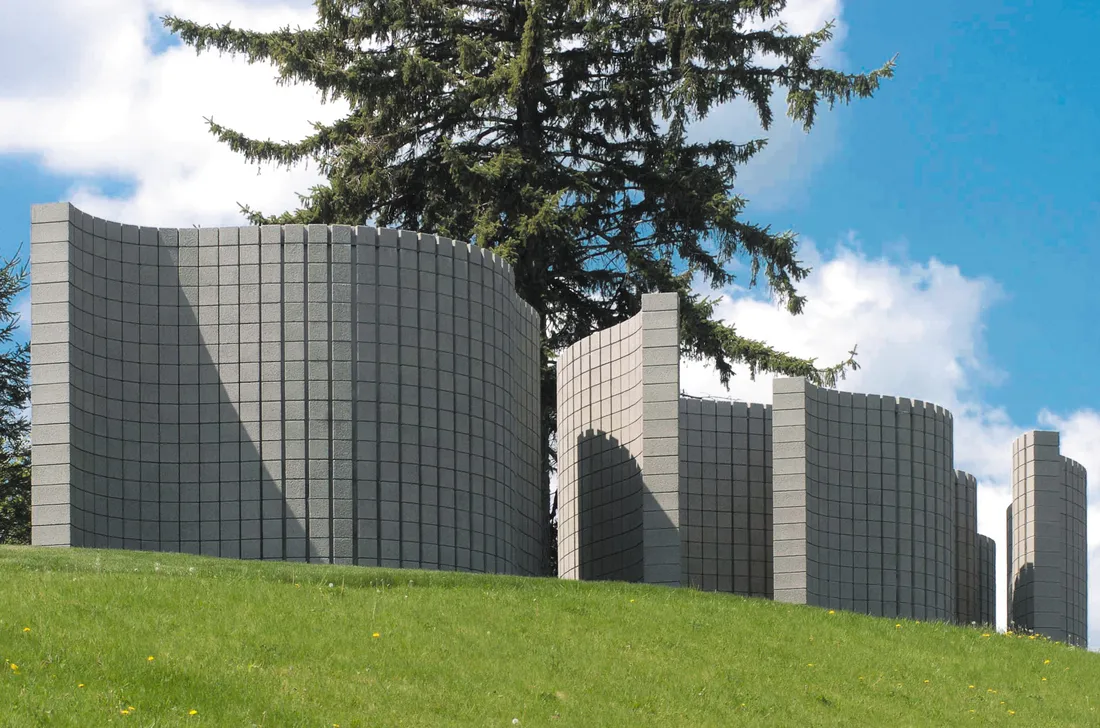
Six Curved Walls
Sol LeWitt ’49, 2004
Located on Crouse College Hillside
Created in just 38 days, this installation comprises six concrete walls, each 12 feet high, that wind across the Crouse College hillside. The site, positioned between the University and surrounding city, emphasizes the importance of art to a community’s development.
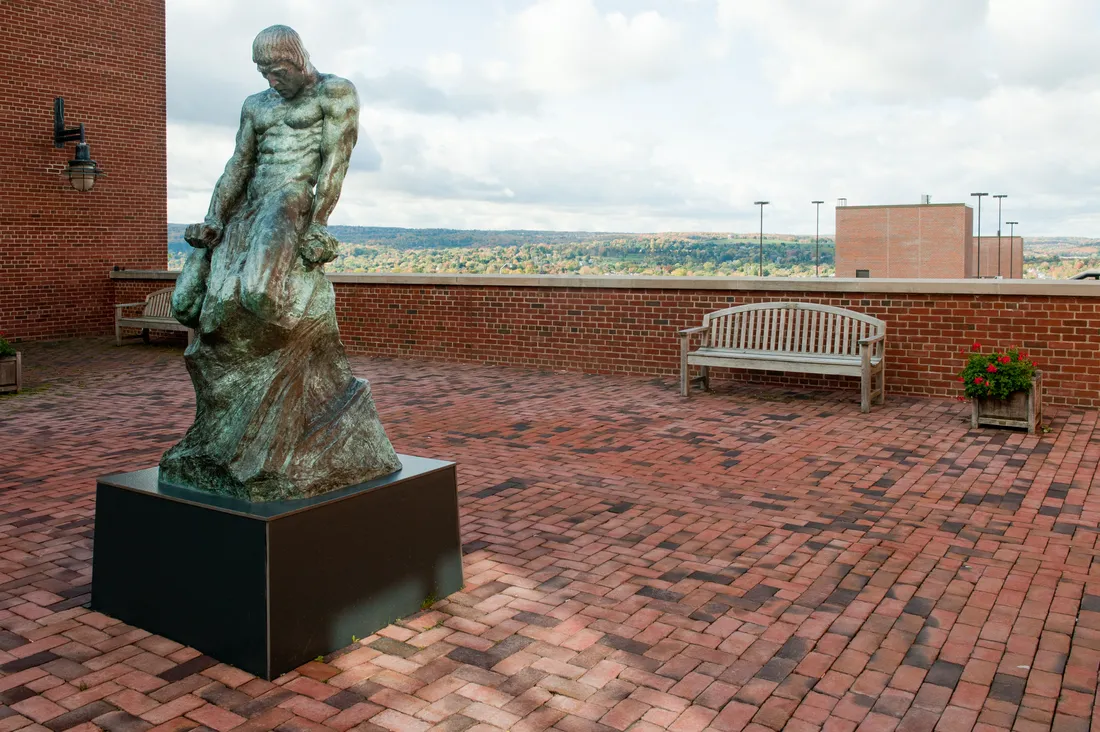
The Struggle of Elemental Man
Malvina Hoffman, 1936
Located in the Falk College Courtyard
In 1930, philanthropist Stanley Field commissioned Malvina Hoffman to sculpt and cast bronze figures depicting the peoples of the world for Chicago’s Field Museum. This bronze, similar in its depiction of strength and power to that which characterized her Field Museum series, was shown at the 1939 New York World’s Fair. The University purchased the sculpture for the permanent collection in 1965.
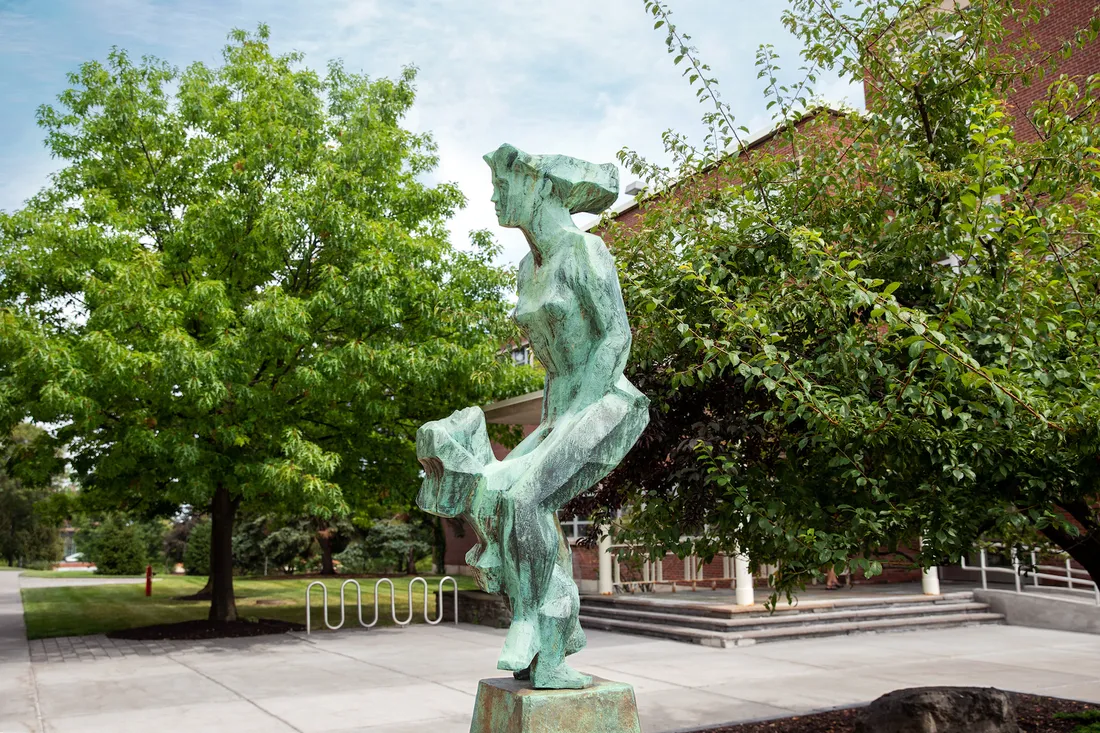
The Dancing Mother
Chaim Gross, 1956
Located between Hinds Hall and H.B. Crouse Hall
Conveying the Austrian artist’s optimistic and affirming themes, this bronze sculpture was a 1966 gift to the university from Helen and Saul Rosen, parents of Elizabeth Rosen ’67. Depicting the spirit of mother and child by physically melding two forms into one, the statue is an example of Gross’ semi-abstract interpretations of the human form, which feature acrobats, cyclists, and mothers and children to convey joyful exuberance. The sculpture on campus appears green, with a patina formed by oxidation over time.
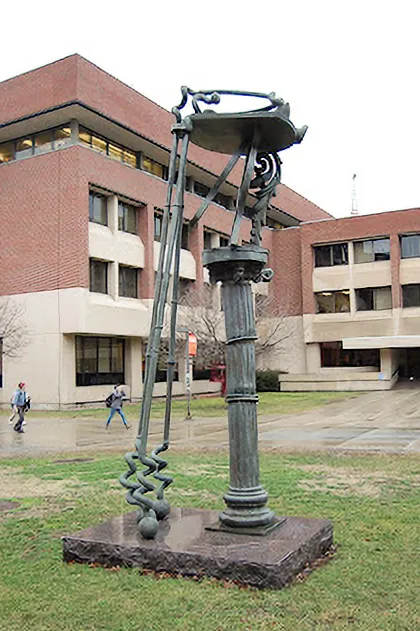
The Oracle’s Tears
Rodger Mack, 1999
Located in front of the Shaffer Art Building
This 18-foot bronze sculpture conveys the artist’s interest in fragmented architectural ruins, an area of focus in his work during the 1990s. Known for large-scale bronze and steel sculptures featured in galleries around the world, Mack was a professor in Syracuse University’s College of Visual and Performing Arts for more than 30 years and served as the first director of its School of Art and Design from 1982-91.

